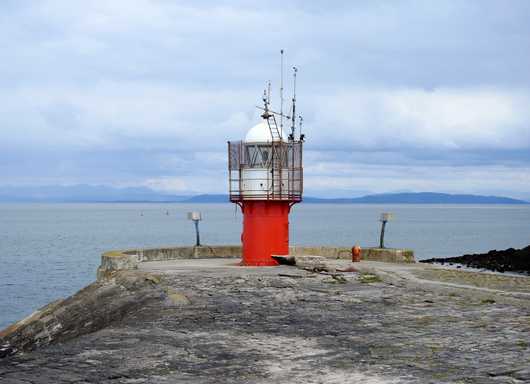Heysham South Pier

Before the coming of the railways, Heysham was a relatively small village mainly concerned with fishing and farming. However, this was to change with the coming of the railways. In 1891, the Midland Railway Company, which owned a dock in Morecambe, announced that it intended to build a port at Heysham in order to establish a new route to Belfast and Dublin across the Irish Sea, without having to go via Liverpool Docks, which were already highly congested. An Act of Parliament for the construction of the harbour was obtained in 1896, and construction commenced late the next year.
The new docks opened in 1904, by which time the population of Heysham had grown considerably. To mark the southern wall at the entrance to the port, this small prefabricated lighthouse was installed. The cast iron tower was built by Chance Brothers in Birmingham, and is of a type that can, in numerous configurations, be found all around the globe.
The tower is one of the shorter variants, with the lantern room making up more than half of its height. Over time, the tower has undergone changes: it has lost the ventilator ball and weather-vane from the top of its dome roof, its windows have been plated over, and its access door and gallery railings appear to have been replaced. Various cameras and pieces of meteorological equipment clutter the gallery, which has had a wire mesh screen installed around it to deter vandalism of the lantern room glazing. The lantern houses a modern lamp with an occulting green characteristic. The light is on for 6 seconds, followed by a period of darkness for 1.5 seconds, and is visible for 6 nautical miles.
To reach the lighthouse, traverse the length of the sea, starting near Moneyclose Lane wall along the edge of the Heysham Nuclear Power Station, about two-thirds of a mile.
